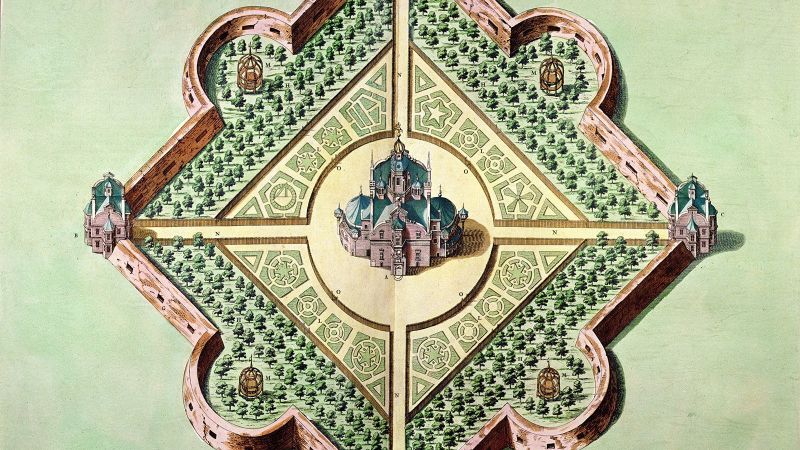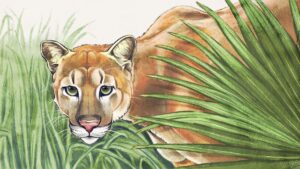Culture Club/Hulton Fine Art Collection/Art Images/Getty Images
Danish astronomer Tycho Brahe’s late 16th-century castle Uraniborg, on the present-day Swedish island of Ven, included an observatory and an alchemy laboratory.
Editor’s note: A version of this story appeared in CNN’s science newsletter Wonder Theory. To get it in your inbox, register for free here.
CNN
—
Experimentation is at the heart of the scientific process—and at the heart of what it means to be human and to question the world around us.
Thousands of years ago, our ancestors created the first star charts and practiced alchemy, the precursor to chemistry.
Even Sir Isaac Newton, considered the father of physics, was an avid alchemist who wrote a recipe for a key ingredient needed to make the legendary Philosopher’s Stone. The stone was believed to turn any metal into silver or gold.
Chemists in the 1700s tended to consider alchemy a pseudoscience. But ancient alchemists actually developed technology and discovered chemical elements that are still widely used today.
Now a new discovery links astronomy and alchemy in an intriguing figure who lived during the Renaissance.
Courtesy of the History Museum at Lund University
The researchers tested pieces recovered from where Uraniborg once stood for chemical elements.
Danish astronomer Tycho Brahe changed the way people understood the heavens in the 1500s by spotting a supernova and hypothesizing that the Moon orbited the Earth—all before telescopes existed.
But in the basement of his castle named Uraniborg, which included an observatory, the astronomer carried out secret alchemical work for elite royal clients. Little is known about Brahe’s work, except for his commitment to developing medicinal recipes rather than gold.
New analysis of glass shards from the destroyed alchemy laboratory has revealed the ingredients Brahe used in his mysterious concoctions, including tungsten, which was not formally described until more than 180 years after his death.
NASA astronauts Butch Wilmore and Sonny Williams spent more than 50 days aboard the International Space Station after piloting the first crewed mission on Boeing’s Starliner spacecraft. And there is still no set date for the astronauts to return to Earth.
But NASA and Boeing are now focusing on the “root cause” of the spacecraft’s problems that arose during its journey, including helium leaks and thruster problems.
Engineers have been conducting ground tests for weeks to replicate the anomalies, and additional tests this weekend should fully reveal the problems, said Mark Nappi, Boeing’s commercial crew program manager.
Meanwhile, SpaceX has received approval to continue launches using its Falcon 9 rocket, which recently suffered an end-of-mission failure during a routine trip. After the Starliner mission ends, SpaceX will ferry a quartet of astronauts for NASA’s Crew-9 mission to the space station.
Courtesy of Craig Smith and Diva Amon, ABYSSLINE Project
The newly discovered species Relicanthus sp. lives on mushroom stems attached to polymetallic nodules found on the sea floor.
Marine scientists have discovered an unusual type of oxygen produced without photosynthesis on the seafloor — more than 13,000 feet below the ocean’s surface — that may help unravel the origins of life.
When Andrew Sweetman, a professor at the Scottish Marine Science Association, first discovered the unexpected phenomenon in the Pacific a decade ago, he thought the sensing equipment was faulty. No light can reach the ocean depths, and organisms on the sea floor are not known to produce oxygen.
But now new research by Sweetman and his team suggests that “dark” oxygen could be created by potato-sized metal nodules that act as “geobatteries” in the deep-sea ecosystem.
A camera attached to an endangered shark captured the harrowing moment a boat struck the marine animal, and it may be some of the first footage to show just how common boat strikes are for ocean dwellers.
Researchers do not know whether the 23-foot (7-meter) basking shark, which inhabits the waters around the Blasket Islands, off the coast of Ireland, survived the collision. But the collision apparently left a large scratch and paint stain on the shark’s mottled skin.
Scientists are working to better understand the species, which is among the largest fish in the world. The footage was intended to shed more light on the feeding habits of the giant shark as it feeds on the ocean’s surface with gaping jaws.
Instead, the video highlights why the basking shark and other endangered sea creatures need protection.
Separately, cocaine was found in sharks living off the coast of Brazil, and this is the first time the drug has been found in a free-roaming shark.
NASA/JPL-Caltech/MSSS
NASA’s Perseverance rover found “leopard spots” on a reddish rock called Cheyawa Falls in Mars’ Jesero crater on July 18.
The Perseverance rover has found something that may indicate that Mars may have been home to microbial life in the distant past.
The robotic explorer explored a rock called Cheyawa Falls. The rover used its instruments to analyze the leopard-spot rock and found chemical signatures and structures that may have been formed by life billions of years ago when water was present on the red planet.
“These spots are a big surprise,” said David Flannery, an astrobiologist on the Perseverance science team. “On Earth, these types of features in rocks are often associated with the fossilized record of microbes living below the surface.”
These fresh findings may surprise you:
— Komodo dragons, the world’s largest lizards, have iron-tipped teeth that stain their serrated edges orange and help the deadly predators tear apart their prey, according to a new study.
— The Chandra X-ray Observatory just celebrated a quarter century in space by releasing 25 never-before-seen glowing images of space — but NASA budget cuts could bring the mission to a premature end.
“Humans aren’t the only ones who can blush.” Domestic hens have been observed blushing to express fear or excitement, and researchers working on a French farm have photos of the pink-tinged chickens to prove it.
Did you like what you read? Oh, but there’s more. Register here to get the next edition of Theory of Miracles delivered to you by CNN Space and Science writers in your inbox Ashley Strickland and Katie Hunt. They find wonders in planets beyond our solar system and discoveries from the ancient world.



